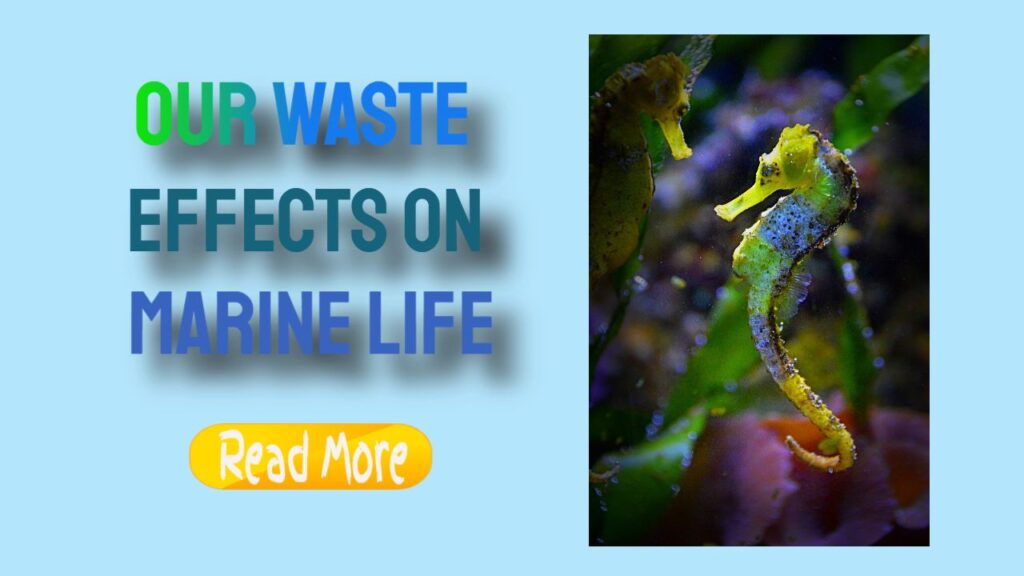Delve into Essential Environmental Topics
- In-Depth Analysis of Oil Spill Environmental Impacts
- Critical Examination of Oil Spill Toxicity on Human Health
- Understanding Ocean and Coastal Acidification Effects on Ecosystems
- Identifying Major Threats to Marine Environments
- Assessing the Societal Consequences of Oil Spills
- Investigating the Economic Impact of Oil Spills
- Recognizing the Significant Effects of Oil Spills on Marine Ecosystems
- Comprehensive Overview of Oil Spills’ Effects on Marine Animals
In-Depth Analysis of Oil Spill Environmental Impacts
Marine pollution is a critical issue influenced by a myriad of factors, including chemical, industrial, and agricultural contaminants, which have seen a marked increase in recent times. The occurrence of oil spills is just one manifestation of this complex problem, compounded by incidents involving untreated sewage discharges and the introduction of invasive species. Scientists and environmental activists are increasingly alarmed by the detrimental impacts these pollutants have, threatening both our natural ecosystems and human health. To combat these challenges, ongoing monitoring efforts are crucial for quantifying the levels of chemical and plastic pollution in our oceans. Various methodologies are employed to track pollutant discharges from land-based activities, particularly oil spills. Initiatives like Horizon 2020 are dedicated to fostering a healthier Mediterranean by identifying pollution sources and advocating for sustainable marine conservation practices.
Research on marine pollution predominantly focuses on its negative impacts on biodiversity, potential health risks to humans, and the overall quality of marine experiences. This analysis not only highlights the significance of these issues but also delves into the intricate relationships between them. While certain seabird populations face adverse effects from oil exposure, significant declines in overall marine species stocks due to pollution are not widely observed. External variables, such as reproductive success and population dynamics, often play a more substantial role. Notably, regions like the North Sea, despite increased pollution levels, have reported growth in fish populations such as cod and haddock over the years, showcasing the resilience of marine life amidst pollution challenges.
Meanwhile, deep-sea mining activities are contributing to marine pollution by extracting valuable minerals like silver, gold, and copper. These operations generate sulphide deposits at great ocean depths, which can potentially release harmful substances that exacerbate ocean toxicity. Ongoing scientific research aims to unravel the environmental ramifications of deep-sea mining; however, it is clear that these operations pose significant risks to marine ecosystems by causing irreversible damage and heightening the likelihood of oil spills and contamination.
Critical Examination of Oil Spill Toxicity on Human Health
Oil spills are significant contributors to marine pollution, but they are not the sole culprits. Other critical sources of ocean pollution include discharges and runoff from urban and agricultural sectors. Each year, millions of pounds of untreated waste, including sewage and hazardous materials, are released into rivers, ultimately finding their way into the ocean. This situation is exacerbated by industrial processes and agricultural runoff, which introduce a cocktail of hazardous chemicals and pollutants into our waterways. The cumulative effects of these pollutants present severe risks not only to marine ecosystems but also to human health, underscoring the urgent need for comprehensive monitoring and regulation.
Ship-based pollution remains a predominant source of maritime contamination, particularly due to oil spills. Crude oil can persist in ocean waters for years, posing high toxicity risks to marine organisms, often leading to suffocation when they become trapped in oil. The cleanup process for oil spills is notoriously challenging, complicating the recovery of affected marine environments. The extent of damage caused by oil spills on coastal ecosystems is influenced by multiple factors, including the type of oil involved, its viscosity, and the effectiveness of the cleanup efforts. For instance, lighter oils may impact marsh vegetation differently than heavier crude oils, each type presenting unique challenges for recovery. Researchers are actively exploring the ecotoxicology of marine pollutants to deepen our understanding of their impacts on both human and environmental health.
Ultimate Secrets To Saltwater Fish And Invertebrates
Understanding Ocean and Coastal Acidification Effects on Ecosystems
Consider the vast diversity of life that inhabits our oceans. The rising levels of acidity in marine environments can significantly alter the dynamics of various plant and animal species, often leading to unpredictable consequences. While some organisms, such as seagrasses, may thrive with increased levels of dissolved carbon dioxide, others, like oysters, often struggle as their larvae fail to survive in more acidic conditions. This shift in acidity not only impacts individual species but can also lead to dramatic changes in entire ecosystems, affecting species abundance and interactions in complex ways.
Research indicates that approximately 80% of marine pollution is believed to originate from land, primarily driven by the pressures of growing coastal populations. Nutrient pollution, predominantly from agricultural runoff and sewage, overwhelms marine environments with excessive nitrogen and phosphorus, resulting in harmful algal blooms. The decay of these blooms depletes oxygen levels in the water, creating hypoxic zones where marine life cannot survive. As the ocean, covering 71% of our planet, continues to absorb greenhouse gases and experiences rising temperatures, significant disruptions occur in the delicate balance of marine and coastal ecosystems. Moreover, the melting ice caps and altered ocean currents further exacerbate these ongoing environmental changes.
Plastic pollution has emerged as a critical concern in coastal and marine ecosystems worldwide. The continuous influx of plastic waste disrupts the structural integrity and function of these ecosystems, posing both direct and indirect threats to marine life. Plastic pollution originates from various sources, stemming from both land-based and ocean-based activities, and manifests in multiple forms such as metaplastic, macroplastics, mesoplastics, and microplastics. Understanding the far-reaching implications of plastic pollution is essential for developing effective strategies to mitigate its impacts on marine environments.
Identifying Major Threats to Marine Environments
Antimicrobial resistance (AMR) has likely been a part of marine microbial communities for centuries; however, its prevalence has surged recently, particularly in coastal waters. This increase is thought to correlate with the growing introduction of pollutants and pathogens from terrestrial sources into marine environments. The detrimental effects of plastic litter on marine ecosystems have been extensively documented, indicating that numerous marine species face significant threats from plastic waste, jeopardizing their survival, especially as many species are already vulnerable due to various anthropogenic pressures.
Marine animals often suffer from entanglement and ingestion of plastic debris, leading to severe health complications and population declines. Lesser-known threats include the indirect consequences of plastic waste on invasive species and the potential for harmful chemicals, such as polychlorinated biphenyls, to infiltrate the food chain. The socio-economic impacts of marine litter are complex and interrelated, posing considerable challenges for management and mitigation strategies. Research on ghost fishing, for instance, reveals the economic losses associated with lost fishing gear, illustrating the broader implications of marine pollution on livelihoods and coastal economies.
Assessing the Societal Consequences of Oil Spills
The escalating pollution of our oceans due to human activities significantly undermines the sustainability of marine ecosystems, resulting in far-reaching societal consequences. Advanced monitoring technologies, including airborne and spaceborne sensors, are being utilized to provide comprehensive insights into major marine pollutants, such as oil spills, chemical discharges, and algal blooms. However, evaluating these pollutants is complex due to their dynamic nature and the limitations of existing data regarding their specific characteristics and impacts, particularly in optically shallow waters.
Notable oil spill incidents, such as the Exxon Valdez and Deepwater Horizon disasters, have left enduring scars on marine environments and the communities that depend on them. The Torrey Canyon spill in 1967 marked one of the first major oil disasters, releasing an estimated 25-36 million gallons of crude oil off the coast of Cornwall, England, and severely affecting coastlines in both the UK and France. The Deepwater Horizon spill, originating from the seabed, had devastating effects on the Gulf Coast’s ecosystem, impacting marine life across all levels. In marine oil spills, fish and other marine organisms are often the first to be affected, facing exposure to toxic oil components that can lead to long-term health issues and reproductive challenges.
Investigating the Economic Impact of Oil Spills
Estuaries, often located near petrochemical industries, are particularly vulnerable to oil exposure due to transport activities via ships and pipelines. Oil spills can inflict severe damage on vital intertidal habitats, including salt marshes and mangroves, leading to long-lasting ecological impacts. The entanglement of marine animals in debris and their accidental ingestion of harmful materials further compounds the risks posed by oil spills, impacting vulnerable species such as seabirds, turtles, and marine mammals.
Oil plays a crucial role in the modern economy, serving as an affordable energy source and a raw material for plastics. The ramifications of oil and gas exploration and production are multifaceted, affecting ecosystems at all stages, from exploration to extraction and eventual combustion. In the North Sea, it is estimated that offshore activities contribute to 29% of the total oil input into marine environments, underscoring the ongoing risks associated with oil production and its long-term consequences for both marine life and economic stability.
Recognizing the Significant Effects of Oil Spills on Marine Ecosystems
Despite advancements in environmental regulations, oil spills continue to pose a significant threat to marine ecosystems. While most oil spills are relatively small, their cumulative impact contributes to a substantial amount of oil entering marine environments, with over 5.65 million tonnes released due to tanker spills from 1970 to 2009. The environmental risks associated with offshore oil production are profound, as massive spills can have catastrophic impacts on marine wildlife and coastal communities.
The Deepwater Horizon blowout in 2010 serves as a stark reminder of the potential devastation caused by offshore drilling accidents. Although natural disturbances often allow ecosystems to recover, oil spills introduce persistent contaminants that can disrupt marine life for generations. Larger marine mammals and seabirds are particularly vulnerable to the immediate and long-term health impacts of oil exposure, which can result in physiological changes, immune system challenges, and reproductive failures.
Many coastal and marine ecosystems are adapted to withstand natural disturbances, which create opportunities for new organisms to flourish. However, oil spills introduce a disruptive force that can impede these natural recovery processes. Understanding and supporting the natural restoration mechanisms of affected ecosystems is crucial for mitigating the long-term effects of oil spills and fostering resilient marine environments.
Comprehensive Overview of Oil Spills’ Effects on Marine Animals
Oil and gas exploration activities present numerous challenges for marine ecosystems, primarily through oil spills and associated noise pollution. Each year, thousands of oil spills occur in the United States alone, causing severe damage to marine habitats and wildlife. The consequences of oil spills can persist for decades, with cleanup efforts often only removing a fraction of the oil, while sometimes introducing additional harmful chemicals that exacerbate the problem. Marine mammals, including dolphins and whales, face increased health risks when exposed to oil and toxic substances from drilling operations.
Additionally, the impact of marine debris, commonly referred to as “plastic trash,” is an urgent concern. Millions of Americans engage in coastal activities, often unaware of how their daily actions contribute to marine pollution. Marine litter threatens the ecological integrity of coral reefs and other critical habitats, leading to declines in biodiversity and disrupting essential ecological functions. All species of sea turtles and over half of known marine mammal species are adversely affected by marine litter, which can lead to entanglement, ingestion of plastics, and potential toxicity from chemicals leaching from these materials.
The Ocean Conservancy estimates that plastic pollution impacts over 690 species of marine life, highlighting the urgent need for innovative solutions. Some businesses are exploring alternatives to traditional plastic products, such as edible six-pack rings made from leftover brewing materials. The lack of comprehensive scientific data on marine plastic pollution, despite its widespread acknowledgment, emphasizes the necessity for ongoing research and public awareness to address this pressing issue effectively.
Coastal regions are increasingly affected by human activities, with marine pollution and climate change presenting significant challenges to these environments. Understanding the cumulative effects of these pressures is essential for effective coastal zone management and proactive strategies to mitigate environmental risks. Ultimately, the responsibility lies with individuals to contribute to the preservation of our oceans, ensuring they remain healthy and vibrant for generations to come.
The Article Impact of Waste on Marine Life Was Found On https://limitsofstrategy.com



It’s disheartening to see how oil spills are often just the tip of the iceberg when it comes to marine pollution. The intertwining of different pollutants, from chemicals to untreated sewage, creates a toxic cocktail that not only devastates marine ecosystems but also poses serious health risks to communities that rely on these waters.
You’re so right about that; the situation feels overwhelming at times. When you think about all the different layers of marine pollution, it really is like peeling back an onion, and each layer reveals something more troubling. Oil spills grab our attention, but the less visible pollutants often play a larger role in the long-term health of both ecosystems and communities.
It’s clear that the issue of oil spills and their ripple effects on both the environment and human health is profoundly complex and concerning. I’ve often found myself reflecting on the interconnectedness of nature, especially when considering how an event like an oil spill can devastate marine ecosystems and, subsequently, impact community livelihoods dependent on those waters.
This topic resonates deeply with me, particularly considering the recent incidents we’ve seen, like the East Palestine train derailment, which also highlights the intricate web of environmental issues we face. Oil spills aren’t just isolated events; they intertwine with broader ecological dilemmas, including climate change and biodiversity loss. The economic repercussions you mentioned often drive communities to the brink, but I wonder how we can shift our focus from recovery to prevention.
I really appreciate you bringing up the East Palestine train derailment. It’s such a vivid example of how interconnected our environmental issues are. Events like that can feel so overwhelming, especially when you consider how frequently we hear about oil spills and other disasters. It highlights the urgency in addressing not just the symptoms, but the underlying causes.
Your analysis of oil spills and their expansive implications truly underscores the interconnectedness of environmental challenges. It’s alarming to think about how oil spills not only devastate marine life but also cascade into societal and economic repercussions. For instance, the 2010 Deepwater Horizon spill serves as a poignant case study; not only did it lead to significant wildlife mortality and habitat destruction, but it also impacted local fishing industries and tourism, highlighting the delicate balance between ecological health and community livelihoods.
You’ve raised an important point about the far-reaching consequences of oil spills. The tragic events of the Deepwater Horizon spill really illustrate how environmental disasters can ripple through entire communities. The immediate impact on wildlife is only the beginning; it’s the long-term effects on local economies that often remain underestimated.
It’s fascinating to see the multifaceted repercussions of oil spills explored in such depth. The way these incidents interplay with human health and marine ecosystems is indeed alarming. I often think about how these spills not only damage immediate habitats but also ripple through local economies and communities dependent on marine resources.